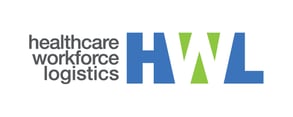Healthcare systems of all sizes are acknowledging the benefits of working with contingent labor; however, many organizations are finding it difficult to manage agency spend, streamline the recruitment process and possess the strategic foresight necessary for successful future staff planning. Contracting with workforce solutions providers to assist with managing contingent labor can save hospitals and practices money while also allowing the organization to focus on what they do best—caring for patients.
The matter of managing contingent labor can be complex. Locums, nursing, and allied health professional wages vary not only among states and cities but also among clinical specialties, certifications, roles, and practice environments. Coupled with the time-consuming task of managing multiple contract labor agencies, it can be a frustrating process for contract staffing specialists.
In response, healthcare organizations must ask themselves the hard questions. Am I managing contingent labor effectively? How do I acquire top temporary talent seamlessly and without overpaying? And how do I uncover if my organization is overpaying in the first place?
Lastly, are you sure you have the necessary resources and expertise to excel in the following important areas when evaluating your contingent workforce usage?
Key Areas
- Sourcing Process
- Insight
- Contracting & Rates
- Services
- Compliance
- Vendor Management Systems (VMS)
- Managed Service Programs (MSP)
- Organizational Impact
According to a report published by Ardent Partners, only 53% of high-performing organizations are able to convert contingent labor data into actionable intelligence. This is often one - of many - reasons why more healthcare organizations are turning to MSPs with leading-edge technology.
Request Info: COVID-19 Surge Staffing Program - No Obligation
Important Factors to Consider When Evaluating Your Contingent Workforce Usage
1. Sourcing Process
- What is your process for sourcing contingent labor?
- Are you using technology to assist you?
If you’re responsible for managing the entire staffing process from the initial requisition creation to time collection and invoicing—you understand the need for a streamlined contingent labor acquisition process. Exceptional contract labor specialists prioritize their time, spot deficiencies quickly, and know when to seek outside expert assistance.
- Do you know where your labor is coming from?
- Do you know what departments are using what labor?
Healthcare organizations need real insight into their processes – and not just data, but real-time data coupled with expert analysis to understand what the data means and how to act on it. And, if you’re working with an MSP, you will want to remain proactive as possible, reacting to emerging insight as it occurs — not next month, or next quarter, but as it happens. The same is needed when working with a contingent workforce supplier or VMS.
3. Contracting & Rates
- Are you spending too much?
- Do you have full visibility and control over labor spend and rates?
An open market and complete transparency are key components vital to successfully managing the contingent workforce. An open ecosystem empowers healthcare organizations to make better decisions to improve their business. Combining real-time market data with exchange management tools like a VMS can facilitate better fill rates, reduced vacancies, and lower overall costs.
4. Services
- Do you need more than just technology to manage your contingent labor?
From account management, clinical interviewing of nursing candidates, and managing the entire process from the initial requisition creation to time collection and invoicing—it’s a tall order to fill with a finite amount of time each day.
While a VMS will streamline and standardize the management of contingent workers across the healthcare organization to reduce costs and increase time saved, a knowledgeable MSP provider can ensure your organization stays proactive and not reactive when it comes to its temporary workforce.
5. VMS- Is your system vendor-neutral?
- Do you have the option to add new vendors?
Don’t get locked into one vendor. Opt for a vendor-neutral system that can achieve true scalability by adding vendors when needed. When all vendors are on an even playing field, healthcare organizations benefit through true competition resulting in a reduction in bill rates and higher quality of staff.
6. MSP- Are your managed workforce solutions designed to meet the demands of Locum, Nursing, Allied, and Non-clinical professional services?
Managing multiple agencies can be a time-consuming and frustrating process. And with email and phone-based communication, tracking your progress, managing costs against budget, and gaining visibility into quality and performance metrics is nearly impossible, unless you partner with an industry-leading MSP provider.
An MSP provider will engage all stakeholders that ensure competitive market rate structures and supplier commitment by establishing a vendor panel across all geographies. In addition, staffing experts will manage the entire process and serve as a single point of contact that acts as a liaison between suppliers and your internal stakeholders.
7. Compliance- Is there an easier way to collect necessary candidate documentation, certifications, licenses, etc.?
- Do you have the resources to implement this efficiently?
All certifications, documents, and other health information get verified and uploaded to ensure 100% compliance with HR requirements when you choose to work with an expert MSP provider.
8. Organizational Impact- What kind of impact do you expect within your organization when you implement a contingent workforce management system?
Every healthcare organization should be working towards achieving a healthy balance of contingent labor use necessary to balance out supply and demand in an ever-changing healthcare labor market. By establishing positive relationships with vendor partners, leadership can ensure that everyone involved is adding value and positively contributing to more favorable patient outcomes and financial stability.
Find Out What You’re Really Spending & How Much You Could Save
HWL is uniquely positioned to act as an honest broker for our clients. The combination of our vendor-neutral philosophy, access to real-time market intelligence, and first-hand knowledge of agencies’ inner workings position us to negotiate the most competitive rates.
Allow us to demonstrate how we can help your organization turn real-time data and staffing strategies into actionable results. Contact us today, 833-495-4636 ext. 5 / sales@hwlmsp.com for more information or to schedule a demo.
Additional Resources

